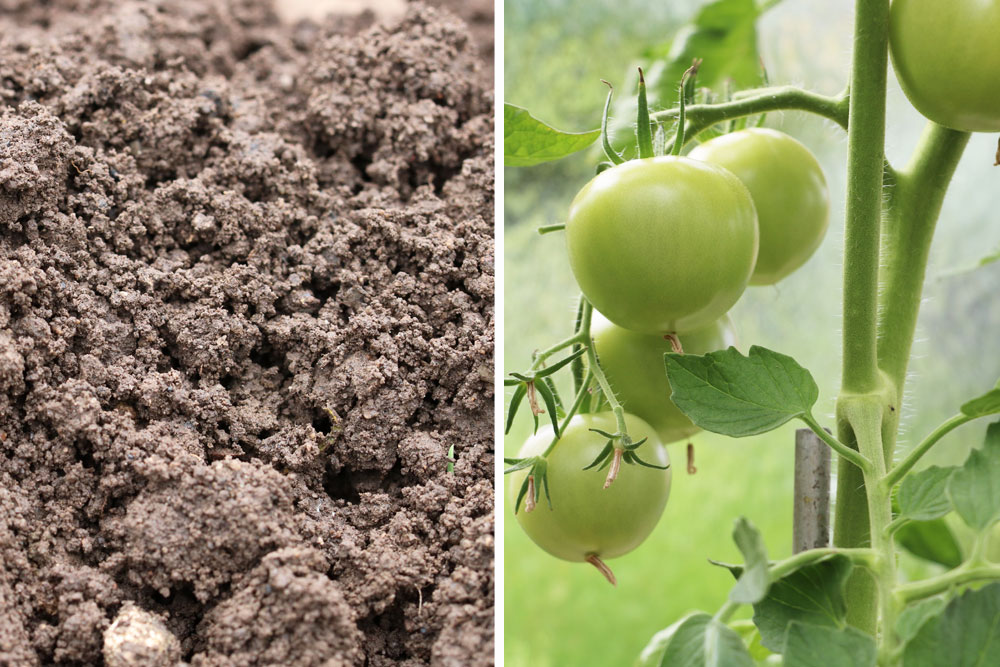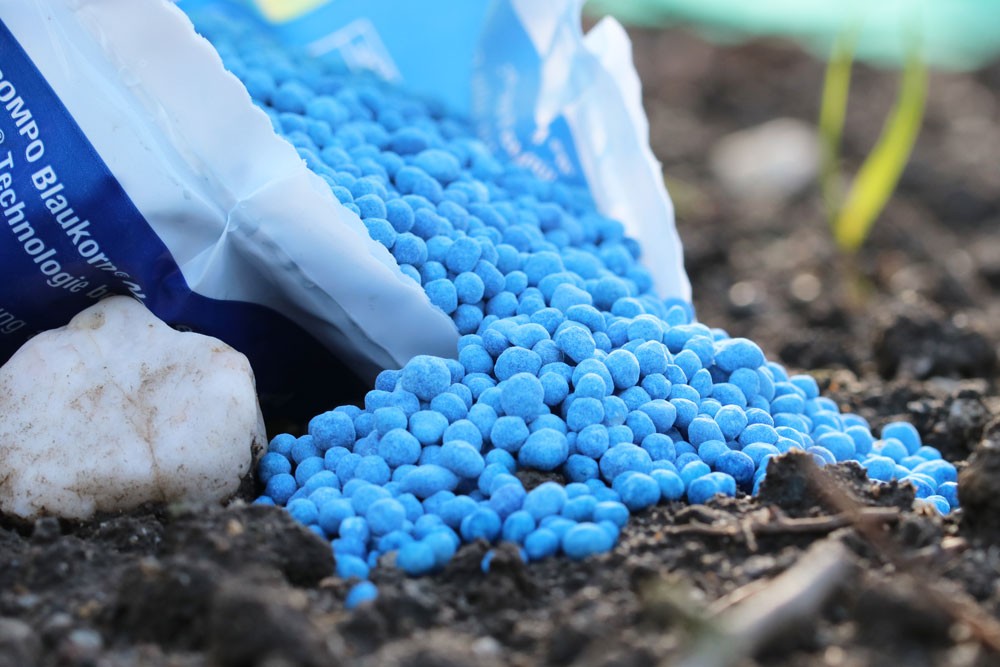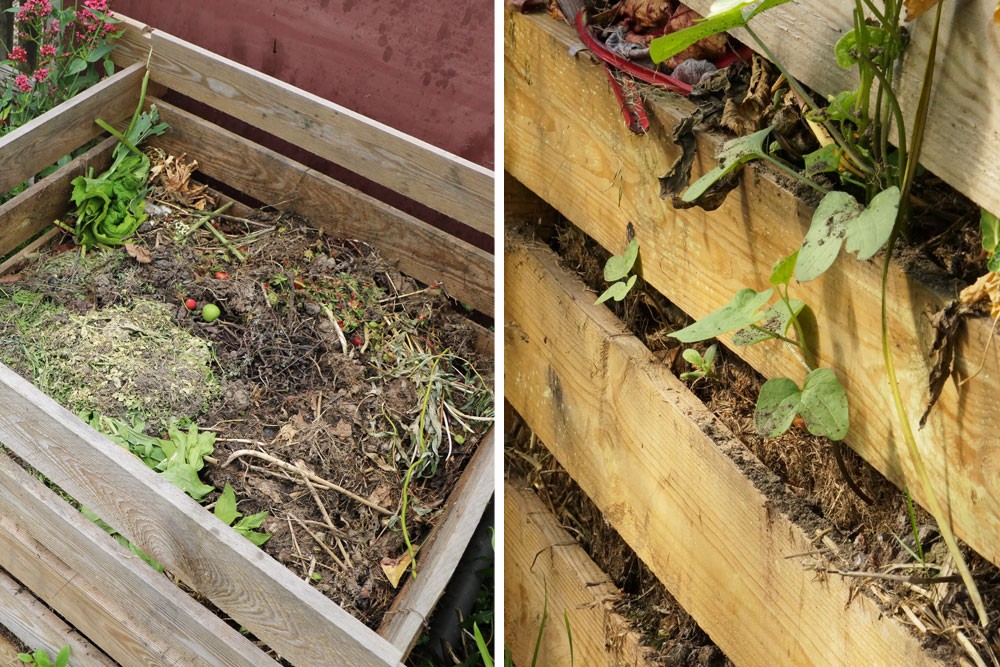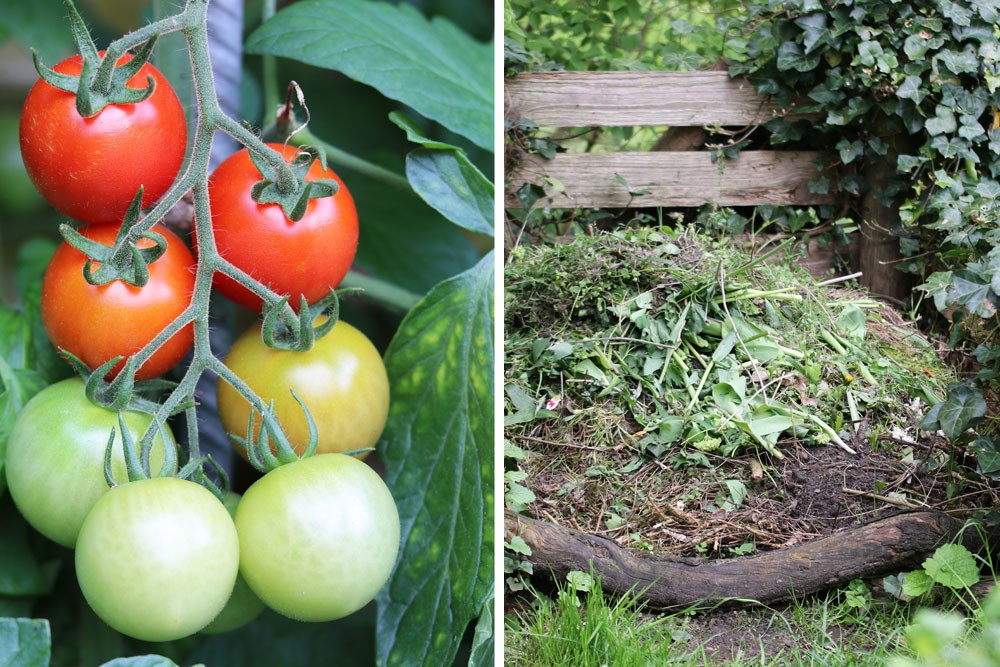Tomato plants are highly nutritious and therefore require sufficient nutrients on an ongoing basis. In addition to a nutrient-rich substrate, fertilizing is essential for growth. In addition, fertilizing strengthens the resistance of tomatoes and protects them from pests and diseases.
Contents
- 1 General information about fertilizing
- 2 How often to fertilize?
- 3 When to fertilize?
- 4 Tomato fertilizer
- 5 Fertilizer composition
- 6 Organic fertilizers
- 7 Horn shavings and horn meal.
- 8 Horse manure
- 9 Fresh horse manure
- 10 Dried horse manure
- 11 Compost
- 12 Home remedies as tomato fertilizer
- 13 Nettle broth
- 14 Tea
- 15 Coffee grounds
- 16 Author
General information about fertilizing
Before fertilizing should first pay attention to the composition of the soil. For example, clay soils are extremely rich in nutrients, so here the amount of fertilizer can be halved. In addition, it should be noted that plants that have a high light requirement need more fertilizer. The location also plays an important role: for outdoor tomatoes, in contrast to balcony tomatoes, preparing the soil with fertilizer is beneficial.

How often to fertilize?
How often to fertilize tomato plants?
How often to fertilize depends on the variety of tomato, as well as the type of fertilizer. Basically, after planting, the plants are fertilized about every two weeks. If the tomato plants show signs of deficiency, fertilizer should be applied more often.
When to fertilize?
When to fertilize the tomato plants?
As a general rule, never fertilize at sowing time! Because the tomato seeds germinate in principle in a sowing soil, which is already very rich in nutrients. A further addition of tomato fertilizer would be counterproductive, as it can lead to malformation or deficiency of the roots.
- when buying a young plant do not fertilize directly
- but about 2 to 4 weeks after planting
- preferably in the root area with a complete fertilizer
- about 50 grams per plant
- fertilize after four weeks
- ideally early in the morning, before the sun shines
- or in the late evening hours
- because if the sun is too strong, the roots and leaves can burn
For tomatoes in the bed, it is worth preparing the soil for the coming year. In this case, the soil is already fertilized in the fall, for example, with compost. This allows the organisms in the soil to decompose the compost over the winter, making the soil very rich in nutrients in the next season.
Tomato fertilizer
What tomato fertilizers are available?
Meanwhile, there are numerous tomato fertilizers, which differ in composition, duration of action, as well as handling. Basically, a distinction is made between mineral and organic fertilizers
Mineral fertilizers
Mineral fertilizers are industrially produced or artificial fertilizers. The advantage of these tomato fertilizers is that the composition of the ingredients is perfectly adapted to the tomato plants. In addition, unlike organic fertilizers, there is no risk of contamination, harmful substances, as well as pests. Mineral tomato fertilizers are particularly suitable for cultivation in tubs and they come in different varieties:
Liquid fertilizer
Liquid fertilizers are particularly suitable for cultivation in tubs as well as for cultivation in a dry climate. Many amateur gardeners resort to a liquid tomato fertilizer, as its handling is extremely simple and it acts very quickly. This tomato fertilizer is used as follows.
- from the second week after planting
- until flowering about every 2 to 3 weeks
- weekly after fruit set
- never water on dry soil
- the soil should be slightly moist
Fertilizer sticks and drops
These tomato fertilizers are particularly convincing due to their long-term effect, which can last from a few weeks to a complete season. The composition of the ingredients is also adapted to the tomato plants, but the dosage varies depending on the preparation. The sticks are quickly and easily applied.
- are particularly suitable for potted plants
- sticks a few centimeters from the edge of the pot
- stick them into the soil close to the roots
Blue grain
Care should be taken with this high-dose industrial fertilizer, as its use often results in overfertilization. This can damage or burn the roots. Nevertheless, this chemical product has an unbeatable advantage, because the tomato plants are supplied with all the necessary nutrients enormously quickly. To fertilize tomatoes with blue grain, proceed as follows.
- add a few grains to the moist soil
- leave enough distance from the plant stem
- then water so that the grains dissolve
- once a month for potted plants without drainage
- not suitable for young plants

Blue grain can also be used as a liquid tomato fertilizer and has proven to be particularly beneficial in the growth phase. The mixing ratio for this is: 5 grams of blue grain to 10 liters of water.
Caution: Blue grain can be toxic to both humans and animals when used in high amounts. It is therefore essential to exercise caution when using blue grain on small children and pets!
Potassium nitrate – KNO3
Potassium nitrate is the potassium salt of nitric acid. Therefore, it is often called saltpeter or potassium nitrate in common usage. The handling of this fertilizer is difficult compared to the other preparations, which is why it is used mainly in professional cultivation. For private use, this tomato fertilizer is suitable only to a limited extent, especially since the potassium nitrate is available only in small quantities in pharmacies.
Fertilizer composition
Tomato fertilizer composition
Tomato plants need numerous nutrients to grow and thrive. The advantage of mineral fertilizers is that they already contain these nutrients in the right proportions. A kilo of tomatoes requires per square meter on average.
- 3 grams of nitrogen
- 0.5 grams of phosphate
- 3.8 grams of potassium
- 4 grams of magnesium
These substances are the most essential nutrients for tomatoes. It is important that the plants receive these substances in the right proportions, because both an excess and a deficiency can cause problems.
Nitrogen
growth is not possible without nitrogen, which is why it is one of the basic nutrients of every plant
Nitrogen deficiency
- reduced growth
- light green to yellowish foliage
- tomatoes remain small
- nitrogen surplus
- plant shoots up
- many new leaves are formed, which curl up
- these lose firmness
Potassium
Potassium promotes fruit formation and favors the storage life of tomatoes
Potassium also has a positive influence on the taste of tomatoes.
Potassium deficiency
- plants evaporate more water
- this causes them to slacken more quickly
- leaves turn brown and dry out
Potassium excess
leads to growth inhibition
Phosphorus
Phosphorus is essential for energy supply
Phosphorus deficiency
- late or no flowering
- leaf veins and stems turn reddish
- upper side of the leaves looks dirty green
- only a few tomatoes are formed
- leaves and stems appear stiff
excess phosphorus
- leads to growth disorders
- because the plant can absorb less iron and copper
Magnesium is essential for photosynthesis and for the formation of chlorophyll
Magnesium deficiency
- chlorophyll cannot be produced sufficiently
- plants show a growth in length
- this is also called yellowing
- Leaves turn yellow and later brown
Magnesium excess
- can lead to a disturbance of other nutrients
Organic fertilizers
Organic fertilizers are naturally grown fertilizers. The advantage here is that they are biological and usually less expensive. Likewise, it is almost impossible to over-fertilize with an organic fertilizer.
The disadvantage is that they act slowly and accordingly they can not provide the plants with nutrients quickly or in the short term. This is because the nutrients are in organic form and are decomposed by organisms in the soil. They are subsequently processed into humus, which provides numerous nutrients to the tomato plants. The most popular organic fertilizers are:
Horn shavings and horn meal.
These are rasped hooves and horns from slaughter cattle. The horn shavings and horn meal are characterized mainly by their high nitrogen content, which is over 10 percent. These natural tomato fertilizers also convince with their long-term effect, which lasts for several months. Horn shavings and horn meal can also be used throughout the year, proceeding as follows.
- Ideally, work into the soil before sowing or planting.
- it is best to work in with sifted compost
- but crushed eggshells are also suitable
- the soil should be slightly moist
- 100 grams per square meter of soil or 100 liters of substrate.
The rotting process takes several weeks to months, depending on the grain size of the horn shavings. In the process, nitrogen is released, which enriches the soil and supports the growth of tomato plants. Horn shavings and horn meal contain a lot of nitrogen, but no phosphate.
Phosphate is already present in large quantities in the soil, so additional fertilization with this substance is often a burden for the plants. Therefore, when using horn manure, overfertilization with phosphate is impossible.
Horse manure
Horse manure is not only organic, but is also characterized by its high nutrient content. Compared to cow manure, horse manure contains more undigested plant fibers. This is due to the fact that horses, unlike cows, are not ruminants. Horse apples can be used as fertilizer both fresh and dried.
Fresh horse manure
Fresh horse manure has the advantage of generating enormous heat during decomposition, up to 80 degrees. The amateur gardener can take advantage of this, as tomato plants love heat. It is therefore ideal as a heat source for sowing in the vegetable patch. It is important that the tomato plants do not have direct contact with the horse manure. To use the fresh horse manure, proceed as follows.
- dig the soil to a depth of about 30 to 50 cm
- ideally, the bottom layer should be covered with straw up to 10 cm deep
- tread it down with the feet
- then put a 30 cm layer of horse manure on top of it
- fill the rest with soil
- ideally with sowing soil
Dried horse manure
Dried horse manure can be made yourself, but it is preferable to buy it in stores. This is because when the manure is dried, there is a considerable odor due to the ammonia vapors. To use dried horse manure, proceed as follows.
- Spread horse manure around the plants
- It is not necessary to work it into the soil
- however, whole horse droppings should be covered with soil
Compost
Compost is one of the most popular organic fertilizers because it is organic and can be made by yourself. Vegetable waste, leaves as well as animal waste are suitable for compost. This natural fertilizer is applied as follows

- Sift compost
- before planting, work the sifted compost into the soil
- fertilize every two weeks until the beginning of flowering
- about 2 liters per square meter of soil
- then increase the dosage to 3 to 5 liters
- this depends on the type of tomato
Home remedies as tomato fertilizer
There are also home remedies suitable as tomato fertilizer. These can be made with simple steps themselves and are also extremely inexpensive and organic. The following home remedies can be used for fertilizing:
Nettle broth
Nettle broth is not only suitable as a fertilizer, but also helps in pest control, because it protects tomatoes from aphids. Nettle broth is quick and easy to make yourself: The plant parts are poured into a bucket with water. Once the mixture begins to ferment, it can be used as fertilizer as follows.
- Mixing ratio: 1 part slurry to 20 parts water.
- for example ½ liter of liquid manure to 10 liters of water.
- spray the mixture on the roots every two weeks
- the remaining leaves are suitable for mulching
- the tomato plant needs more potassium
- the mixing ratio can be adjusted to 1:10
Tea
Unlike coffee, tea is not suitable as a fertilizer on its own, as its nutrient content is insufficient. Nevertheless, it can be ideally used as a combination preparation, as it contains the active ingredient tein, which has a germicidal effect on plants and drives away pests. Tea can be used as a fertilizer as follows.
- mix the dried tea grounds into the soil
- do not spread it loosely around the plants
- because this attracts vermin
- or use tea as a liquid fertilizer
- steep a few tea bags in water
- then water the plants with it
Coffee grounds

The supposed waste product contains numerous nutrients from which the tomato plants can benefit. Because coffee as well as coffee grounds contain nitrogen, phosphorus and potassium. Before coffee grounds can be used as fertilizer, they must first dry. There are several ways in which this home remedy can be used for fertilizing.
either mix the coffee grounds into the soil
or distribute as dry fertilizer around the plants
or water the plants with it as a liquid fertilizer
a small amount is mixed into the irrigation water
Fertilization with coffee grounds about once a month


